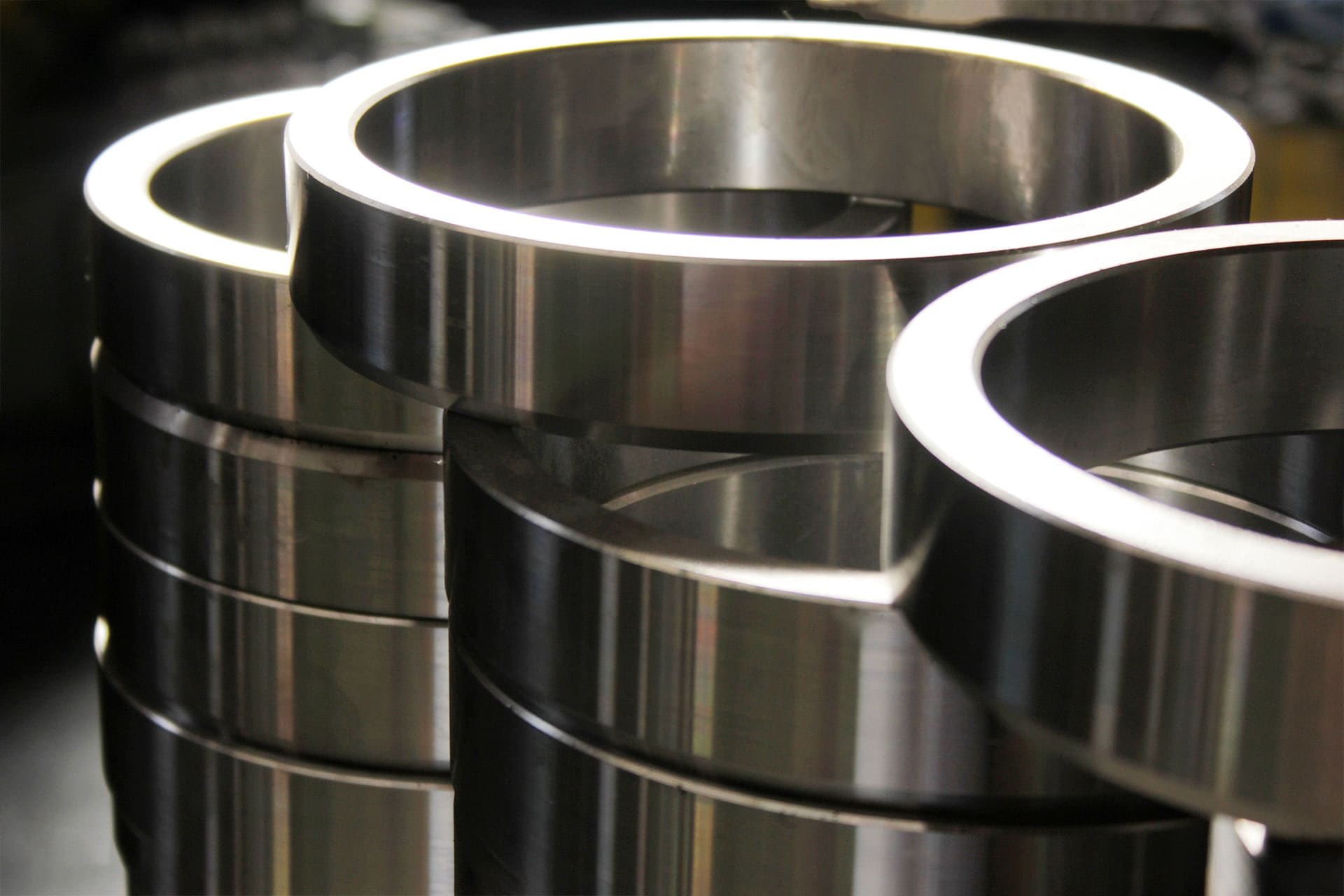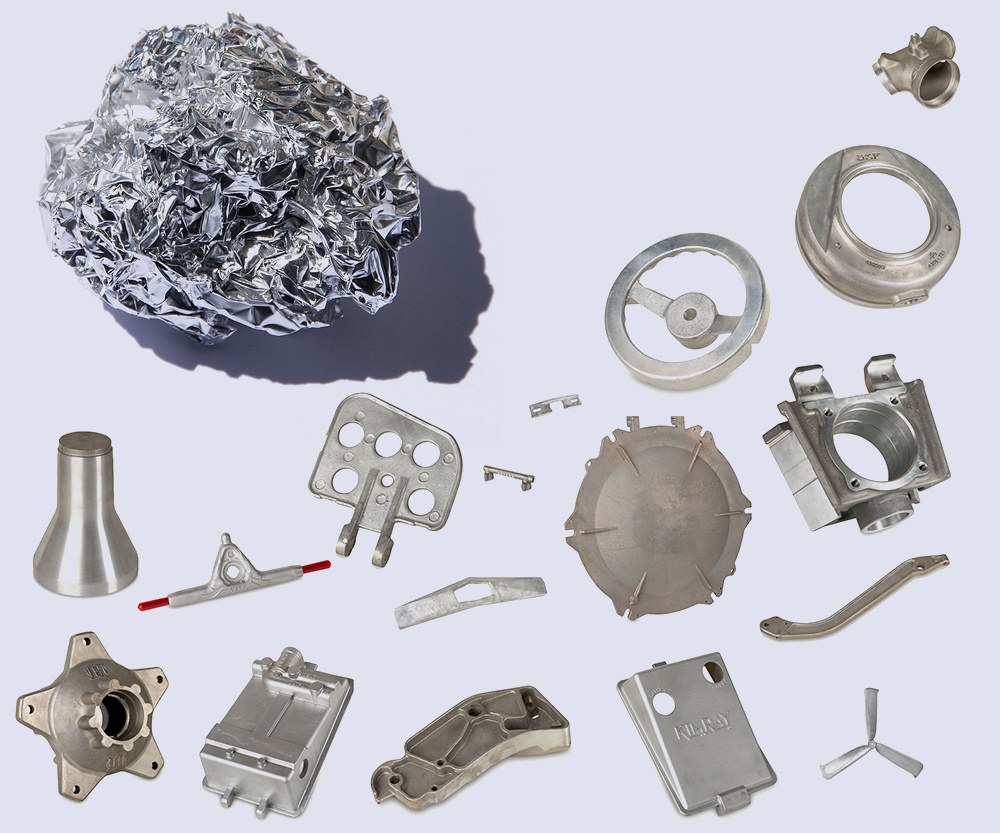Quality assurance standards at Wisconsin Aluminum Foundry for reliability
Wiki Article
How Aluminum Foundry Adds to Innovative Solutions in Steel Manufacture
Aluminum foundries substantially affect the landscape of steel construction. They adopt advanced casting strategies that improve precision and layout versatility. This ability allows for the manufacturing of resilient and light-weight parts that accommodate diverse sector demands. The combination of automation and lasting practices establishes a benchmark for efficiency. As these foundries develop, they question regarding the future of production and the duty of advancement in forming the sector.The Function of Aluminum Foundries in Modern Manufacturing
Aluminum shops play a crucial role in modern-day manufacturing, adding substantially to numerous industries, including automobile, aerospace, and consumer goods. These centers concentrate on the melting and casting of aluminum, transforming resources into high-grade elements that meet rigid sector requirements. The lightweight yet solid residential properties of Aluminum make it a perfect choice for makers intending to improve efficiency while minimizing weight, specifically in the automobile market, where gas performance is critical.Aluminum foundries make use of ingenious procedures to produce complex forms and designs that provide to specific market demands. By leveraging innovative technologies such as computer-aided style and simulation, these foundries can enhance their manufacturing processes and improve product utilization. This not just boosts the top quality of the end products but additionally decreases waste, adding to even more sustainable manufacturing techniques. Eventually, the contributions of Aluminum shops are crucial for driving innovation and performance throughout multiple industries.
Advanced Spreading Techniques Transforming Steel Manufacture
Advanced spreading techniques are reinventing the area of metal construction, specifically via accuracy casting techniques that boost precision and reduce waste. Innovative alloy developments are likewise playing an essential role, permitting customized buildings and improved performance in various applications. Together, these developments are setting new requirements in efficiency and high quality within Aluminum shops.Accuracy Spreading Approaches
As the need for top quality elements in different sectors remains to climb, precision casting approaches have become a transformative force in steel fabrication. These methods, consisting of financial investment casting, shed foam casting, and die casting, permit for intricate geometries and tight resistances that standard approaches frequently have a hard time to achieve. By utilizing innovative materials and technologies, accuracy spreading reduces waste and improves effectiveness, making it possible for manufacturers to produce intricate parts with minimized lead times. Additionally, these approaches supply exceptional surface area coatings and mechanical homes, making them perfect for sectors such as aerospace, vehicle, and medical tools. As suppliers progressively take on precision spreading, the capability to satisfy details style needs while preserving cost-effectiveness comes to be a crucial advantage in today's competitive market.Ingenious Alloy Developments
Cutting-edge alloy growths are reshaping the landscape of steel fabrication, specifically within the domain of accuracy spreading. Developments in material science have actually brought about the creation of specialized Aluminum alloys that boost strength, resistance, and longevity to rust. These unique alloys make it possible for shops to generate elaborate parts with improved mechanical properties, satisfying diverse sectors such as aerospace, automotive, and electronics. The unification of advanced spreading techniques, including die spreading and sand casting, further optimizes making use of these products, permitting complicated geometries and minimized waste. Therefore, manufacturers are much better equipped to fulfill rigorous efficiency criteria while lessening ecological influence. Eventually, these innovative alloys are paving the way for a new age of performance and sustainability in metal fabrication.Long Lasting and light-weight: The Advantages of Aluminum Elements
Aluminum components offer substantial advantages in numerous applications as a result of their lightweight nature and longevity. This mix adds to enhanced fuel effectiveness, specifically in the aerospace and automotive markets. Furthermore, light weight aluminum's fundamental deterioration resistance even more expands the life-span of products, making it a favored choice in lots of steel manufacture procedures.Improved Fuel Efficiency
While conventional materials have actually long been the requirement in various sectors, the change in the direction of Aluminum elements is revolutionizing the landscape of steel construction, particularly in relation to improved gas performance. Aluminum's lightweight nature notably lowers the general weight of lorries and equipment, enabling for enhanced efficiency and decreased power usage. This decrease in weight equates directly to reduced fuel usage, making Aluminum an attractive choice for producers intending to satisfy rigorous environmental policies. Additionally, light weight aluminum's sturdiness warranties that parts keep their honesty with time, adding to long-term efficiency. As sectors significantly focus on sustainability, the adoption of Aluminum parts ends up being a calculated choice, lining up operational goals with environmental duty while enhancing gas effectiveness in different applications.Corrosion Resistance Perks
Among the standout features of Aluminum elements is their exceptional corrosion resistance, which substantially improves the long life and reliability of different applications. This property is especially beneficial in severe environments, such as marine and commercial setups, where direct exposure to wetness and chemicals can result in significant destruction in various other metals. Unlike steel, Aluminum naturally forms a safety oxide layer that functions as a barrier versus environmental components, lessening the threat of corrosion and rust. Therefore, Aluminum components need less maintenance and have a longer service life, making them a cost-effective selection for manufacturers. This integral longevity not only adds to the total performance of products but also sustains sustainability efforts by minimizing the demand for frequent replacements.Innovations in Layout and Engineering With Aluminum Foundries
As developments in Aluminum Foundry technology remain to reshape the landscape of metal construction, ingenious layout and design remedies are arising to fulfill the demands of diverse sectors. The flexibility of Aluminum enables detailed designs that were formerly unattainable with conventional products. Shops are leveraging computer-aided design (CAD) software program and simulation devices to enhance the layout process, enabling designers to produce light-weight yet durable components tailored to specific applications.Additionally, the ability to integrate sophisticated alloying methods allows the modification of Aluminum residential or commercial properties, enhancing stamina and durability. This adaptability fosters imagination in product growth, enabling firms to trying out new forms and structures that enhance performance while minimizing weight. Collective initiatives between shops and designers facilitate rapid prototyping, resulting in much shorter job timelines and raised general effectiveness. These technologies not only boost product performance but likewise drive sustainability by lessening material waste during the manufacture process.
Enhancing Efficiency With State-Of-The-Art Technology
Advancements in modern modern technology are changing the efficiency of Aluminum shops, enhancing processes from style to manufacturing. Automation plays a critical function, with robot systems enhancing the rate and precision of tasks such as molding, putting, and finishing. These automated options reduce human mistake and reduce labor expenses, while additionally enhancing result consistency.In addition, the assimilation of sophisticated software application for computer-aided design (CAD) and simulation allows for rapid prototyping and testing, expediting the change from principle to production. Foundries are using real-time data analytics to keep track of operations, making certain peak efficiency and lessening downtime.
3D printing modern technology is being embraced for creating complex molds and elements, minimizing product waste and lead times. The mix of these innovative innovations not just improves productivity yet likewise enhances the high Aluminum Castings quality of Aluminum items, placing shops at the leading edge of innovation in steel construction.
Sustainable Practices in Aluminum Foundries
A growing number of Aluminum factories are embracing sustainable practices to decrease their environmental impact and advertise resource effectiveness. Aluminum Foundry. These shops are progressively implementing reusing programs, where scrap Aluminum is accumulated and reprocessed, greatly lessening waste. Furthermore, energy-efficient technologies, such as electric heaters and advanced insulation materials, are being utilized to lower power usage throughout the melting procedureWater conservation strategies are additionally acquiring grip, with many foundries reusing water in cooling systems to lower total usage. The fostering of environment-friendly layers and additives decreases harmful emissions without compromising product quality.
Future Patterns in Aluminum Spreading and Metalworking
Increasingly, the future of Aluminum casting and metalworking is being shaped by technological developments and developing market criteria. Innovations in automation and robotics are improving procedures, enhancing accuracy, and reducing labor expenses. The fostering of additive production methods, such as 3D printing, is transforming conventional casting approaches, enabling intricate geometries and lowered product waste.The integration of artificial knowledge and information analytics is enabling real-time monitoring and predictive upkeep, which enhances production performance. Sustainability stays a core emphasis, with business investing in eco-friendly methods, including the recycling of Aluminum scrap and the usage of renewable power sources in manufacturing.
As the demand for lightweight, long lasting materials in different sectors rises, Aluminum shops need to adjust by creating cutting-edge alloys and enhancing spreading methods. These fads collectively indicate a future where Aluminum casting and metalworking are much more effective, lasting, and receptive to market requirements.

Frequently Asked Questions
What Types of Aluminum Alloys Are Commonly Made Use Of in Shops?
Frequently utilized Aluminum alloys in factories include 2xxx series (copper), 3xxx series (manganese), 4xxx collection (silicon), 5xxx collection (magnesium), and 6xxx collection (magnesium and silicon), each offering special residential properties ideal for numerous applications.How Does Aluminum Casting Compare to Various Other Steel Construction Methods?
Aluminum casting offers advantages such as reduced manufacturing prices and intricate shapes compared to conventional construction methods. It gives exceptional dimensional accuracy and surface area finish, making it a favored choice for several industries over choices like machining or welding.What Safety And Security Measures Are Executed in Aluminum Foundries?
Aluminum factories execute various security procedures, consisting of individual protective equipment, ventilation systems, normal safety training, danger assessments, and emergency methods to secure workers from dangers related to liquified steel, warmth, and prospective chemical exposure. Aluminum Foundry.Exactly How Can Companies Locate Dependable Aluminum Foundry Partners?
Firms can recognize reputable Aluminum Foundry companions by reviewing market track record, evaluating customer testimonies, appraising high quality certifications, thinking about production capacities, and conducting website check outs to assure alignment with their certain demands and requirements.

What Is the Normal Lead Time for Aluminum Casting Projects?
The regular preparation for Aluminum spreading projects ranges from two to 8 weeks, depending on elements such as style complexity, production volume, and the foundry's capability to meet particular project needs and timelines.
Aluminum factories play an essential duty in modern-day production, adding substantially to various industries, consisting of auto, aerospace, and consumer goods. As advancements in Aluminum Foundry technology proceed to improve the landscape of metal construction, innovative style and design remedies are arising to fulfill the needs of varied industries. Improvements in advanced innovation are reinventing the efficiency of Aluminum factories, streamlining processes from layout to production (Metal Castings). An expanding number of Aluminum foundries are adopting sustainable techniques to minimize their environmental influence and advertise resource effectiveness. As the demand for lightweight, durable products in various markets boosts, Aluminum foundries have to adapt by developing cutting-edge alloys and improving casting techniques
Report this wiki page